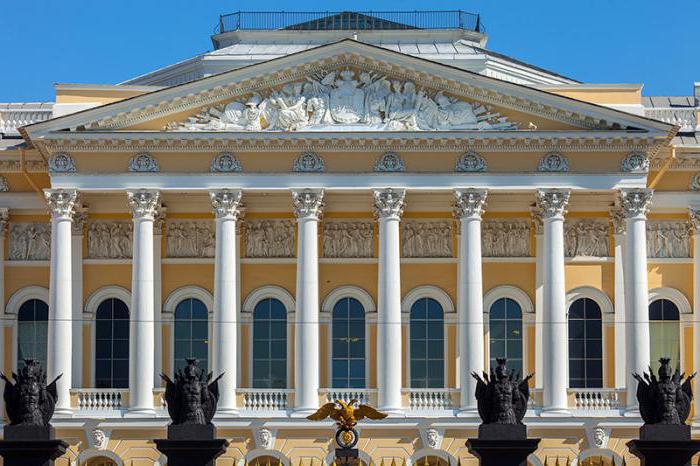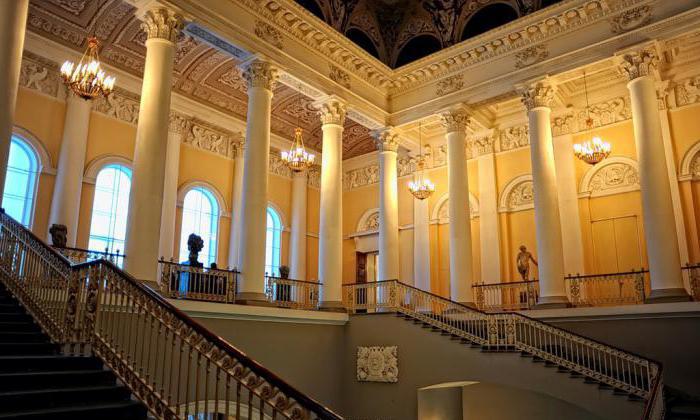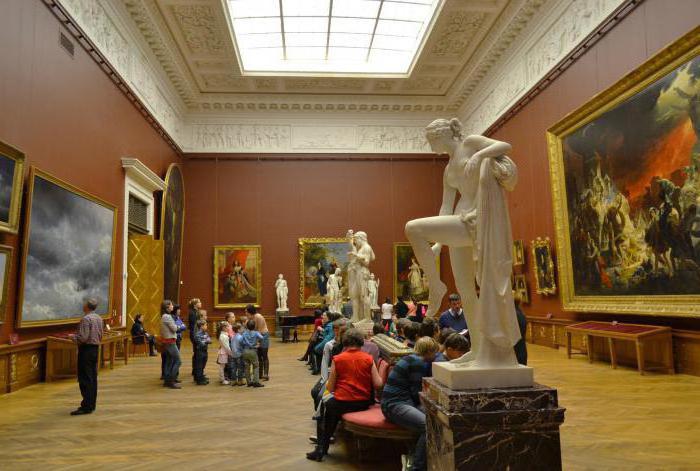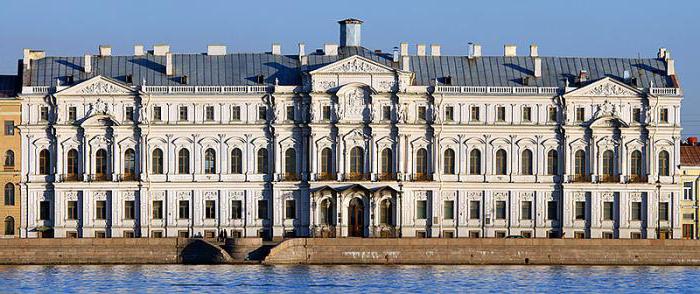The 19th century in the history of Russia is distinguished by a real rise in national identity and culture. The list of works by world famous artists, composers, architects, sculptors who worked at that time is huge. One of such outstanding creations of architectural art is the Mikhailovsky Palace in St. Petersburg.
Carl Rossi Project
The decision to build the palace, Paul I made shortly after the birth of his fourth son - Michael. The idea required a lot of money, so it was postponed - during the life of this emperor, the palace was not even started to be designed.
But after the palace coup and the assassination of Paul, Alexander I, who ascended the throne, considered it necessary to fulfill his father’s will. In 1817, he commissioned the construction of the then-famous architect Karl Rossi, who designed the Mikhailovsky Palace in St. Petersburg.
As a place for the future residence of the Grand Duke, a wasteland successfully preserved since Peter the Great was chosen in the very center of the city. Rossi took the emperor’s instructions responsibly and not only created the project of the palace complex, but also planned two new streets (Mikhailovskaya and Engineering), as well as the palace square, known today as the Arts Square. And from the side of the Field of Mars, it was decided to break the Mikhailovsky Garden.
Architectural features
From an architectural point of view, the Mikhailovsky Palace in St. Petersburg is not quite ordinary. Rossi built it in the form of a Russian noble estate. The central building is connected to two side wings, which served as outbuildings. In one of the buildings there was a kitchen and a servant, in the other - a stable and an arsenal.
At that time, the Empire style architectural style was in fashion, and the Mikhailovsky Palace in St. Petersburg was built in it. Photo allows you to appreciate all the richness of the exterior.
The central building is decorated with a portico with columns of the Corinthian order and stucco molding in the form of lion heads, sculptures of the same animals froze at the main entrance. One of the masterpieces of the decor of the Mikhailovsky Palace is a frieze, on which 44 multi-figured bas-reliefs are located.
The palace impressed not only with its external decoration, but also with its interior decoration. And this is not surprising. Of the 7.5 million rubles spent on construction, four went to the finish.
The interiors of the palace
The magnificent palace interiors under the direction of C. Rossi were created by outstanding artists, carvers and sculptures. Unfortunately, during the redevelopment of the palace at the end of the 19th century, almost nothing remained of them. Some idea of the initial decoration can give only the White Hall and the lobby of the Mikhailovsky Palace.
But judging by the memoirs of contemporaries, including foreigners who visited the palace, the luxury of interior decoration and the art of decoration surpasses the decoration of the most famous palaces in Europe.
History of the Mikhailovsky Palace in St. Petersburg
The construction and decoration of this building was completed only in 1825, and after its consecration, Grand Duke Mikhail and his family arrived there. The palace immediately became the center of social life in the capital - magnificent interiors were perfectly suited for magnificent balls and receptions.
After the death of Mikhail Pavlovich, the wife of the palace became his wife Elena Pavlovna. She, despite being a princess of Württemberg, not only differed in liberal views, but also cared for the development of Russian culture and art. Since that time, the palace has become the cultural center of the capital, which hosted poetry evenings and meetings of writers and scholars.

When Elena Pavlovna passed away, the Mikhailovsky Palace in St. Petersburg passed to her children and grandchildren, but they were German subjects, and Alexander III decided to buy the creation of the great Russia. This has already been done by Nicholas II, and by his own decree in 1895 the Russian Museum was organized in the Mikhailovsky Palace.
A new stage in history
To accommodate large-scale expositions, not only many interior rooms were rebuilt, but another building with a facade overlooking the Griboedov Canal was also designed. The architect L. Benoit was engaged in this, and the construction of the building was completed after the end of the First World War. Although the opening of the museum took place earlier - in March 1898.
The collection of the Russian Museum includes exhibits from the halls of the Winter Palace, the Hermitage and private vaults of Princess M.K. Tenisheva, Prince A. B. Lobanov-Rostovsky and others.
Since that time, Mikhailovsky Palace has become the largest museum of national art. Its organizers were famous architects, artists, art historians, ethnographers and historians. Already in the first years after the opening of the exhibition were located in 37 rooms. Initially, along with art exhibitions, there was a department dedicated to Emperor Alexander III, and an ethnographic department that existed in the Mikhailovsky Palace until 1934.
Mikhailovsky Palace after the revolution
After 1917, the collection of the Russian Museum was significantly replenished due to works of art seized from the numerous mansions of St. Petersburg in the process of nationalization. Mikhailovsky Palace has become the largest center not only for demonstration, but also for the study of art.
Serious research work is still being carried out here, restoration workshops are functioning, and state funding has made it possible to organize ethnographic and ethno-art expeditions.
Exhibitions in the Mikhailovsky Palace in St. Petersburg have always attracted great attention not only from domestic art lovers, but also from foreign art historians, historians and ethnographers.
In 1926, the museum’s collection was replenished with works of artists of the early XX century, and now in the Mikhailovsky Castle is the largest collection of Russian avant-garde in the world.
During World War II, the most valuable exhibits of the museum were taken to Perm, and the rest of the collection was hidden in the cellars of the Mikhailovsky Palace. The palace itself was damaged by bombing, but was restored and in May 1946 opened to visitors.
Center of Russian Culture and Art
The modern Russian Museum is one of the largest repositories of works of art, in which more than 400 thousand exhibits. Along with permanent expositions, thematic exhibitions and a biennale, creative meetings and scientific conferences are held in the halls of the museum. He oversees the work of more than 250 museums throughout Russia, cultural, educational, scientific, methodological and restoration work in the field of art.
The Russian Museum today unites several historical buildings of the Northern capital: the Mikhailovsky Palace in St. Petersburg itself, whose address is: 4 Engineering Street; Benoit building on the Griboedov Canal, as well as the Engineering Castle, Stroganovsky and Marble Palaces.
Mikhailovsky palaces of St. Petersburg
There are many buildings associated with the name of Mikhail in the Northern capital, some of them belonged to members of the imperial family, in which this name was popular. Although, in addition to the very first Romanov, Mikhailov was not among the autocrats, only the grand dukes.
So, the Mikhailovsky Palace was built for the youngest son of Paul I. But there is also the Novo-Mikhailovsky Palace in St. Petersburg, owned by the son of Nicholas I - Prince Mikhail Nikolaevich. It is located on the Palace Embankment.
But the Mikhailovsky Castle, which is often confused with the Mikhailovsky Palace, owes its name to Archangel Michael, the patron saint of the Romanovs. It was built by order of Paul I on the embankment of the Moika River.Apparently, in order to avoid confusion, another name was assigned to this palace complex - the Engineering Castle.